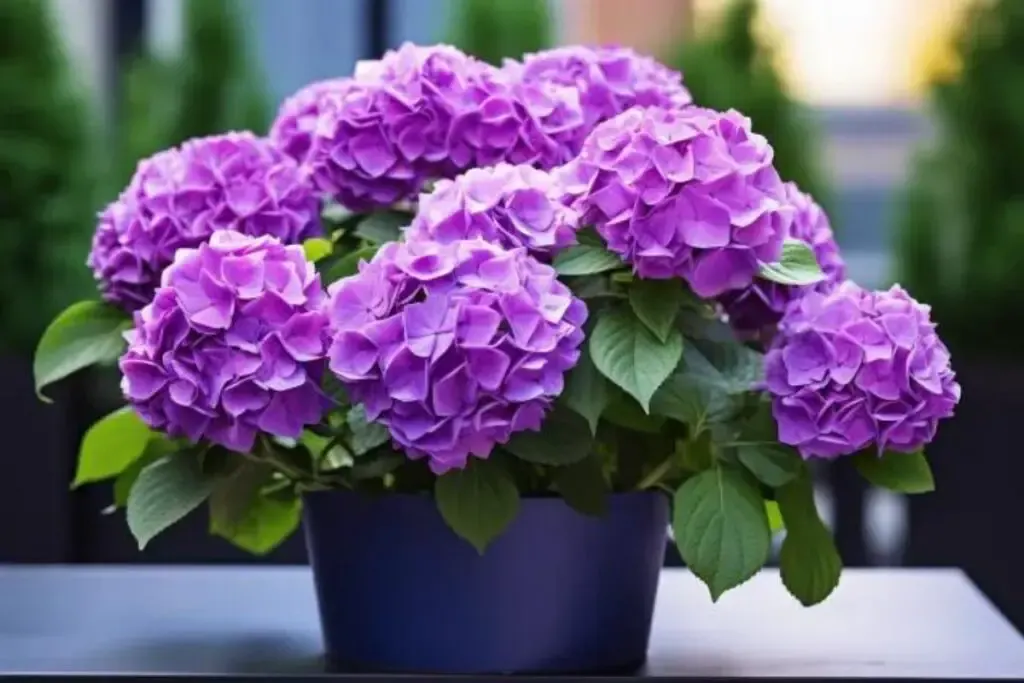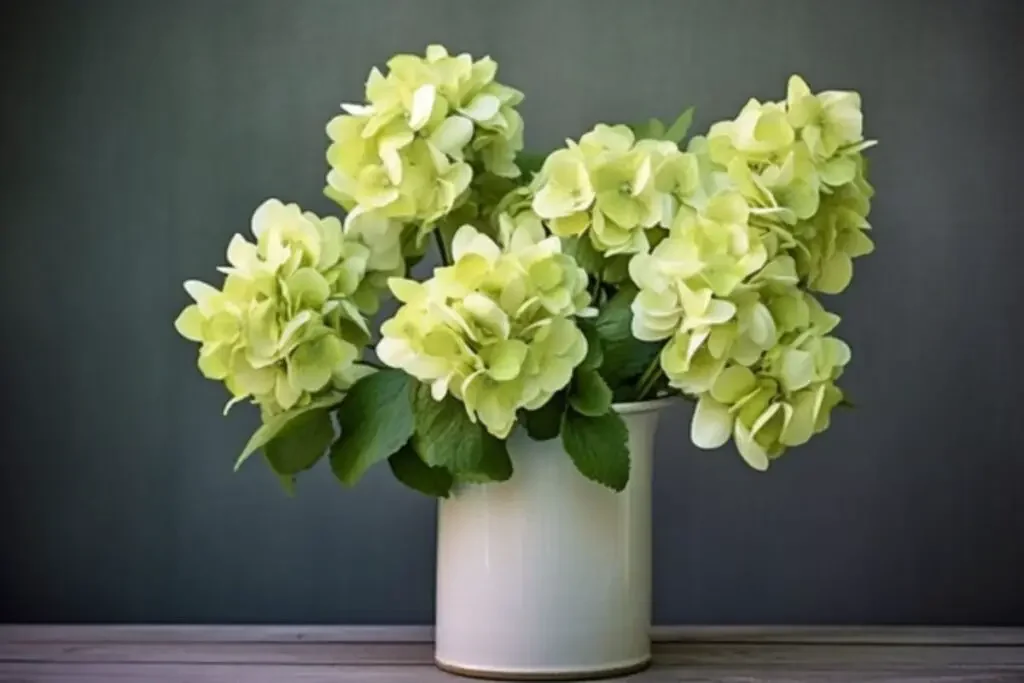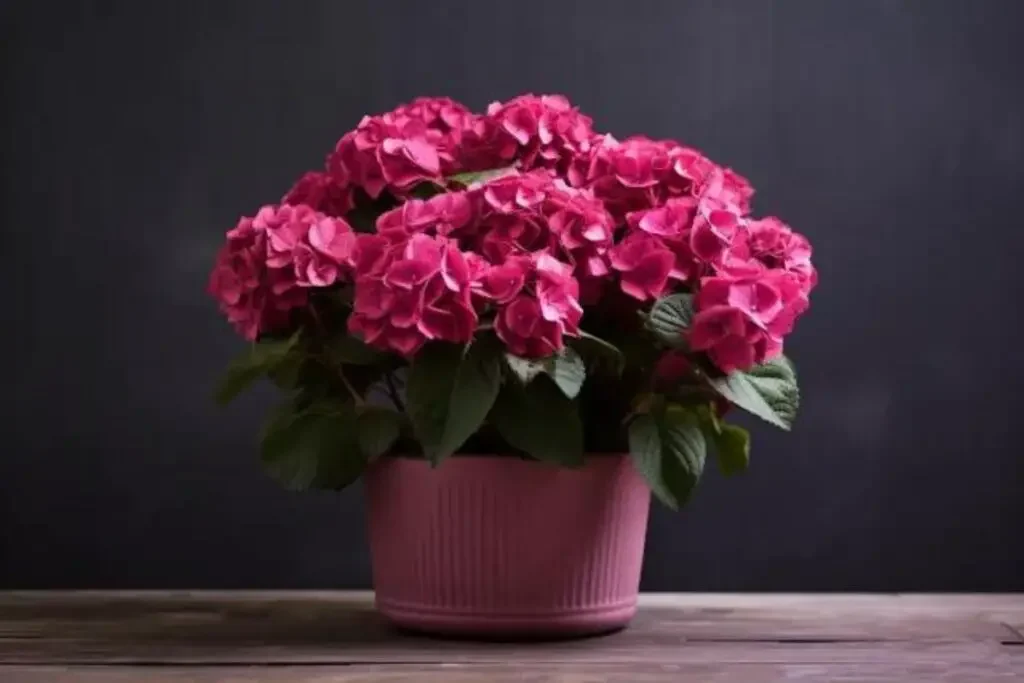Growing plants in pots offer a unique blend of convenience and beauty, and hydrangeas are no exception. These lush, vibrant flowers can bring life to any space, from balconies to patios.
As an expert gardening blogger, I’ve had my fair share of experiences with various plants, and hydrangeas hold a special place in my heart. They’re not just stunning; they’re also quite adaptable and can thrive in pots when given the right care.
In this article, I’ll guide you through the essentials of growing hydrangeas in pots, sharing tips and insights to help you cultivate these beauties like a pro.
Do Hydrangeas Grow Well in Pots?
Hydrangeas are remarkably versatile and can indeed thrive in pots. This adaptability makes them a favorite among gardeners with limited space. However, the key to success lies in choosing the right variety and providing the proper care.
In pots, hydrangeas require adequate room for their roots to spread, consistent moisture, and the right balance of sunlight and shade. With these conditions met, your potted hydrangeas can be just as lush and vibrant as their garden-planted counterparts.
Remember, container gardening with hydrangeas isn’t just a gardening activity; it’s a creative journey!
Best Hydrangea Varieties for Pots
When it comes to choosing hydrangeas for pot cultivation, not all varieties are created equal. Some are more suited to confined spaces and can better handle the unique conditions of pot living.
Let’s dive into three of my personal favorite varieties that are perfect for growing in pots.
1. Endless Summer Hydrangea

The Endless Summer Hydrangea is a true gem for pot gardening. Its ability to bloom on both old and new wood ensures a season full of flowers, which is a delight for any gardener. This variety is particularly forgiving and adaptable, making it an excellent choice for beginners.
The blooms range from deep blues to vibrant pinks, depending on the soil’s pH level, offering a playful element of surprise in your garden.
2. Little Lime Hydrangea

For those with limited space, the Little Lime Hydrangea is a fantastic pick. It’s a dwarf variety, making it perfect for smaller pots and spaces. Despite its compact size, this hydrangea packs a punch with its bright, lime-green flowers that transform into pink and burgundy in the fall.
This variety is not just about aesthetics; it’s also hardy and easy to care for, making it a practical choice for busy gardeners.
3. Cityline Paris Hydrangea

The Cityline Paris Hydrangea is renowned for its rich, deep pink flowers and compact, robust growth. This variety is ideal for containers because it remains small, reducing the need for frequent pruning. The flowers are large and long-lasting, creating a striking display.
Additionally, Cityline Paris is resistant to common hydrangea pests, making it a low-maintenance option for both novice and experienced gardeners alike.
How to Grow and Care For Hydrangeas in Pots
Growing hydrangeas in pots is an art that combines patience, attention to detail, and a touch of gardening passion. The beauty of potted hydrangeas lies not just in their blooms but also in the journey of nurturing them.
Here, I’ll share some essential tips to help you grow and care for your hydrangeas in pots, ensuring they remain healthy and vibrant.
Planting
Planting hydrangeas in pots is akin to setting the stage for a spectacular performance. Begin by filling your chosen pot with a mix of potting soil, compost, and perlite for optimal drainage and nutrient balance.
Gently position the hydrangea in the pot, ensuring it’s at the same depth as it was in the nursery container. This initial step is crucial for setting your hydrangea up for a thriving, bloom-filled future.
Pot Size
The first step is selecting an appropriate pot. Hydrangeas need room to grow, so choose a pot that’s large enough to accommodate their root system. A pot with a diameter of at least 18 inches is a good start. Ensure the pot has adequate drainage holes to prevent waterlogging, which can lead to root rot.
Light
While hydrangeas enjoy sunlight, too much direct sun can be harmful, especially in hotter climates. Aim for a spot that gets morning sun and afternoon shade. This balance helps the blooms retain their vibrant color without scorching.
Soil
Soil choice is a pivotal factor in the success of your potted hydrangeas. Opt for a high-quality potting mix enriched with compost to provide the rich, well-draining environment these plants adore.
Adjusting the soil’s pH can also influence bloom color, with acidic soil yielding blue flowers and alkaline soil promoting pink hues. This malleable aspect of hydrangeas adds an exciting, interactive element to their care.
Watering
Consistent moisture is key. Hydrangeas in pots may require more frequent watering than those in the ground, especially during warmer months. Water thoroughly when the top inch of soil feels dry. However, be cautious of overwatering – hydrangeas like moisture, but they don’t enjoy soggy feet.
Temperature and Humidity
Hydrangeas flourish in moderate climates, showcasing their love for temperate conditions. They prefer temperatures that aren’t too extreme, thriving best in zones 3 to 9.
Humidity isn’t a major concern for these resilient plants, but they do appreciate a bit of extra moisture in the air during hot, dry periods. This adaptability makes them ideal for a variety of settings, from humid coastal regions to drier inland areas.
Fertilizer
Feed your hydrangeas with a balanced, slow-release fertilizer in early spring and mid-summer. This will encourage healthy growth and abundant blooms. Be mindful not to over-fertilize, as this can lead to lush foliage at the expense of blooms.
Pruning Potted Hydrangeas
This is a vital part of caring for potted hydrangeas, acting as a tune-up to keep them healthy and blooming. The key is to understand your hydrangea’s blooming habits: some flower on old wood, while others on new.
Generally, pruning in late winter or early spring, just as the plant starts to sprout new growth, is ideal.
For varieties that bloom on old wood, simply tidy up by removing dead or weak branches. For those blooming on new wood, more aggressive pruning can encourage robust growth and larger blooms.
Always use clean, sharp tools to make precise cuts, which help the plant heal faster and reduce the risk of disease.
Pruning not only maintains the shape and size of your hydrangea but also invigorates the plant, leading to a spectacular display of flowers. Remember, each snip is an opportunity to shape your hydrangea’s future growth and beauty, so approach this task with care and thoughtfulness.
Overwintering
Overwintering potted hydrangeas requires a bit of planning and care, especially in colder climates. These plants are hardy, but their roots are more vulnerable to freezing in pots than in the ground. The key is to protect them from harsh winter temperatures.
If possible, move your hydrangea pots to a sheltered location, like an unheated garage or shed, where they’re out of the wind but can still experience the cold dormancy period. If moving them isn’t feasible, insulate the pot by wrapping it in burlap or bubble wrap.
Also, reduce watering during this time, but don’t let the roots completely dry out. As spring approaches, gradually reintroduce your hydrangeas to the outside environment to prevent shock.
This process, known as “hardening off,” helps them acclimate to the changing conditions. With proper overwintering care, your hydrangeas will emerge in spring ready to grow and bloom beautifully.

